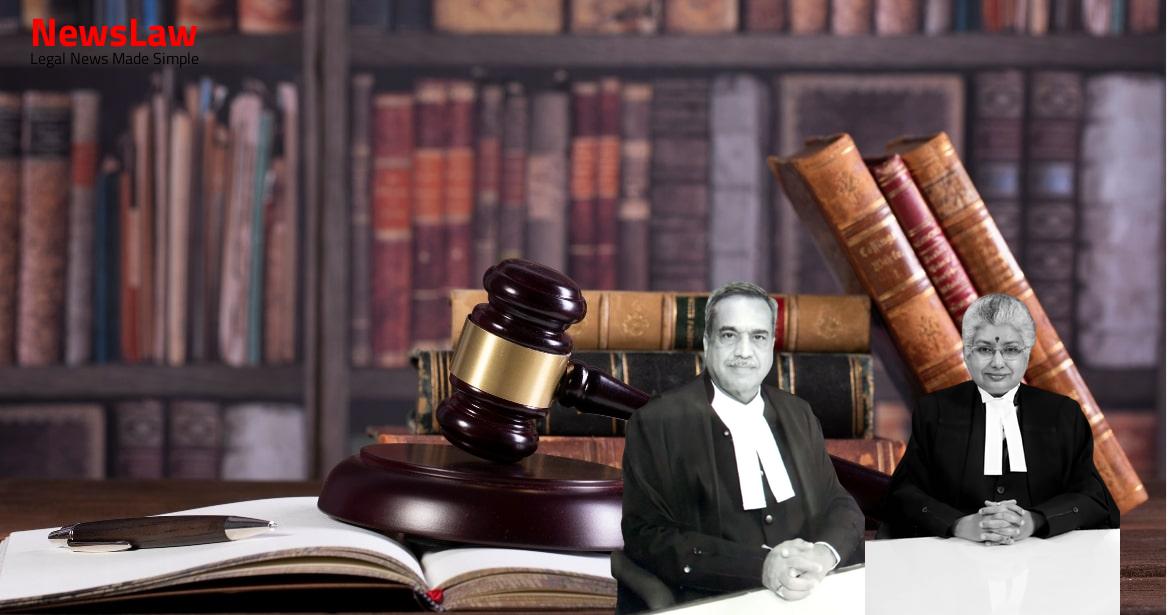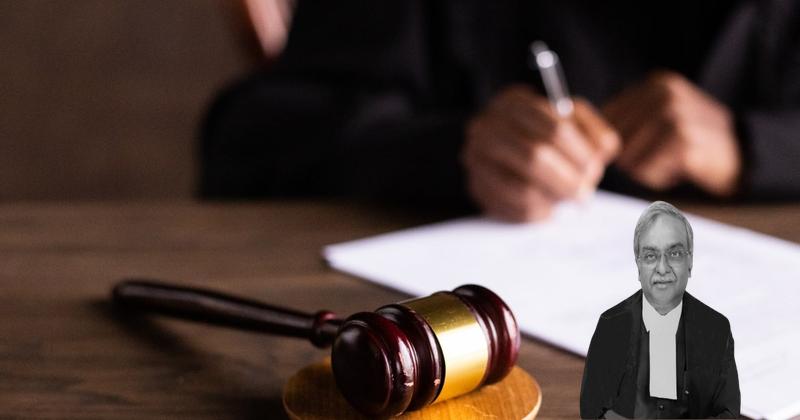This case summary delves into the detailed legal analysis conducted by the court in setting aside an arbitral award. The focus is on the court’s interpretation of the law, contractual provisions, and adherence to established legal principles. Understanding the nuances of the court’s reasoning is essential to grasp the complexities of the case and the implications of the judgment. Follow along to gain insights into the intricate legal analysis involved in this significant legal matter.
Facts
- DAMEPL issued a termination notice on 08.10.2012 due to alleged defects not being cured by DMRC within 90 days, constituting an Event of Default.
- DMRC responded by conducting inspections and acknowledging damage to grouting material above/below the bearings.
- A Joint Inspection Committee was formed to assess the defects in the civil structure.
- The Ministry of Urban Development convened a meeting on 02.07.2012 involving all stakeholders.
- Arbitral Tribunal analyzed the defects, repairs, and the impact on the Concession Agreement.
- DAMEPL stopped operations on 30.06.2013 and handed over the Line to DMRC the next day.
- Main issue was the validity of the termination notice dated 08.10.2012, leading to arbitration by DMRC on 23.10.2012.
- The Arbitral Tribunal focused on determining the amount of Termination Payment to be paid by DMRC under the Concession Agreement.
- Meetings were held with design consultants and other agencies for repair work.
- Dispute resolution under Article 36 of the Concession Agreement was invoked by DMRC.
- The High Court held that ‘Adjusted Equity’ under the Concession Agreement does not include funds recognized as subordinated debt to be treated as ‘Equity’.
- The Arbitral Tribunal made a serious error by disregarding vital evidence of CMRS sanction for resuming commercial operations, which the High Court found to be consequential.
- The High Court faulted the Tribunal for negating the CMRS certificate under the Delhi Metro Act, stating that the findings ‘shocked the conscience of the court’.
- Regarding Adjusted Equity computation, the High Court deemed the Tribunal’s reasoning as flawed and perverse, leading to the partial setting aside of the award.
- The Division Bench reversed the Single Judge’s ruling, allowing DMRC’s appeal and finding the Tribunal’s reasoning to be patently illegal.
- The High Court highlighted discrepancies in the Tribunal’s interpretation of contractual provisions, violating Sections 28(1)(a) and 28(3) of the 1996 Act.
- DMRC’s petition under Section 34 of the 1996 Act was initially dismissed by the Single Judge, who deemed the Tribunal’s findings within its jurisdiction.
- The Tribunal considered defects in the civil structure as breaching the Concession Agreement, leading to the setting aside of the award based on the failure to cure defects.
- The Tribunal’s calculation of ‘Adjusted Equity’ based on debt-to-equity ratios was contested, with the High Court ruling against the Tribunal’s methodology.
- The High Court set aside the Tribunal’s conclusions on termination notice validity and ‘Equity’ calculation, nullifying the Termination Payment awarded to DAMEPL.
Also Read: Legal Analysis on Seniority Fixation in Contempt Petitions
Arguments
- Mr. Harish Salve, representing DAMEPL, argued that the High Court erred in setting aside the Arbitral Tribunal’s award by deviating from established principles of interference under Sections 34 and 37 of the 1996 Act.
- The findings of the Arbitral Tribunal regarding the defects in the civil structure and DMRC’s failure to rectify them were deemed as findings of fact not subject to review under Section 34.
- Interpretation of the provisions of the Concession Agreement was considered the domain of the Arbitral Tribunal, and the award could not be set aside based on a different interpretation by the court.
- The certificate issued by the CMRS, relied upon by DMRC, was deemed insufficient by the Tribunal to show that the defects were cured.
- A cure notice was issued on 09.07.2012, demanding rectification of defects within 90 days, as per the Concession Agreement, followed by a termination notice on 08.10.2012 after the expiration of the 90-day period.
- The Respondent contended that the Arbitral Tribunal made a serious error in interpreting Article 29.5.1 of the Concession Agreement.
- They argued that the CMRS is the sole authority to determine the safety of the Metro Railway based on the Delhi Metro Act and Rules.
- It was asserted by the Respondent that the period for rectifying defects was extended beyond the initial 90 days to another 90 days from the termination notice.
- They further claimed that DAMEPL did not provide evidence that the amount of Rs. 611.95 crore was used for ‘Concessionaire’s Capital Costs’.
- Reference was made to a witness testimony to argue that the said amount may not qualify as equity under the Companies Act, 2013.
- DMRC contended that the High Court correctly overturned the Tribunal’s findings on the computation of ‘Adjusted Equity’.
Also Read: Analysis of Authorization and Limitation in Filing Section 7 Application
Analysis
- An application for setting aside an arbitral award can only be made in accordance with provisions of Section 34 of the 1996 Act.
- The 2015 Amendment Act made amendments to Section 34 of the 1996 Act, restricting judicial interference with arbitral awards to specific grounds mentioned in Section 34.
- Courts, while deciding applications under Section 34, are required to strictly adhere to the grounds specified and not engage in re-appreciation of facts or law.
- Referenced relevant judgments like Uttarakhand Purv Sainik Kalyan Nigam Limited v. Northern Coal Field Limited, Bhaven Construction v. Executive Engineer Sardar Sarovar Narmada Nigam Ltd., and Rashtriya Ispat Nigam v. Dewan Chand Ram Saran.
- The judgment in Ssangyong Engineering and Construction Company Limited v. National Highways Authority of India provides a clear delineation of the limited scope for judicial interference in arbitral awards post the 2015 Amendment Act.
- The Division Bench held that the Arbitral Tribunal did not give due importance to the fact that the AMEL operated without any adverse event for over four years since receiving the CMRS certificate.
- The Arbitrator is the sole judge of the evidence quality and quantity, not the court.
- The Arbitral Tribunal framed issues for consideration based on submissions by parties and answered them.
- Sanction to open the metro railway line for public carriage of passengers is granted by the Central Government after considering the Commissioner’s report on fitness and safety aspects.
- The Concessionaire may terminate the Agreement upon occurrence of specific events unless caused by a Concessionaire Event of Default or Force Majeure Event.
- Rule 11 imposes a duty on the Commissioner to inquire into safety matters before certifying the metro railway.
- The subsequent smooth functioning of the AMEL was relevant, ignored by the Arbitral Tribunal.
- The Tribunal’s view on the 1996 Act provision as a ground for setting aside the arbitral award was consistent with legal understanding.
- Article 29.5.2 of the Concession Agreement outlines Termination Payment details.
- The view of the High Court regarding waiver findings by the Tribunal was upheld.
- Judicial interference with arbitral awards should be minimal as per the 1996 Act.
- The Commissioner’s certificate indicated that restarting commercial operations would not pose a danger to the public.
- The opinion of the Tribunal on the termination notice legality was not considered perverse.
- Various legal issues such as the CMRS certificate, termination notice, and waiver were discussed and upheld by the Tribunal.
- The part of the judgement analyzed pertained to specific contractual interpretations, termination modalities, and compliance with safety standards set by the Commissioner.
- The expression ‘public policy of India’ now means the ‘fundamental policy of Indian law’.
- The Western Geco expansion has been done away with, and the Court’s intervention cannot be on the merits of the award post-amendment.
- Principles of natural justice, as contained in Sections 18 and 34(2)(a)(iii) of the 1996 Act, continue to be grounds of challenge of an award.
- Contravention of a statute not linked to public policy or public interest cannot be a ground for setting aside an award on the ground of patent illegality.
- Reappreciation of evidence cannot be permitted under the ground of patent illegality appearing on the face of the award.
- Violation of the Foreign Exchange Regulation Act, 1973, and disregarding superior courts in India are considered antithetical to the fundamental policy of Indian law.
- Patent illegality on the face of the award refers to illegality going to the root of the matter.
- Errors of law committed by the Arbitral Tribunal do not necessarily fall within the expression ‘patent illegality’.
- A decision which is perverse, based on no evidence, or ignores vital evidence can be set aside on the ground of patent illegality.
- Restraint is stressed on courts while examining the validity of arbitral awards under Section 34 of the 1996 Act.
- The High Court upheld the findings by the Tribunal regarding interest and declined to interfere with them.
- DMRC argued that the interest award would lead to unjust enrichment and sought to set it aside.
- The Tribunal awarded interest based on the terms of the Concession Agreement.
- The Court decided not to rule on the specific performance of the Concession Agreement based on the Tribunal’s decision.
Also Read: Judicial Review of Selection Process for DGP Appointment
Decision
- DAMEPL’s appeal is allowed and the High Court’s judgment is set aside.
- DMRC’s appeal arising out of SLP(C) No. 8311 of 2019 is dismissed.
Case Title: DELHI AIRPORT METRO EXPRESS PVT. LTD. Vs. DELHI METRO RAIL CORPORATION LTD. (2021 INSC 464)
Case Number: C.A. No.-005627-005627 / 2021



